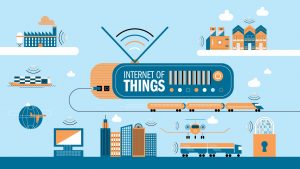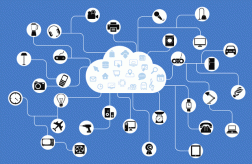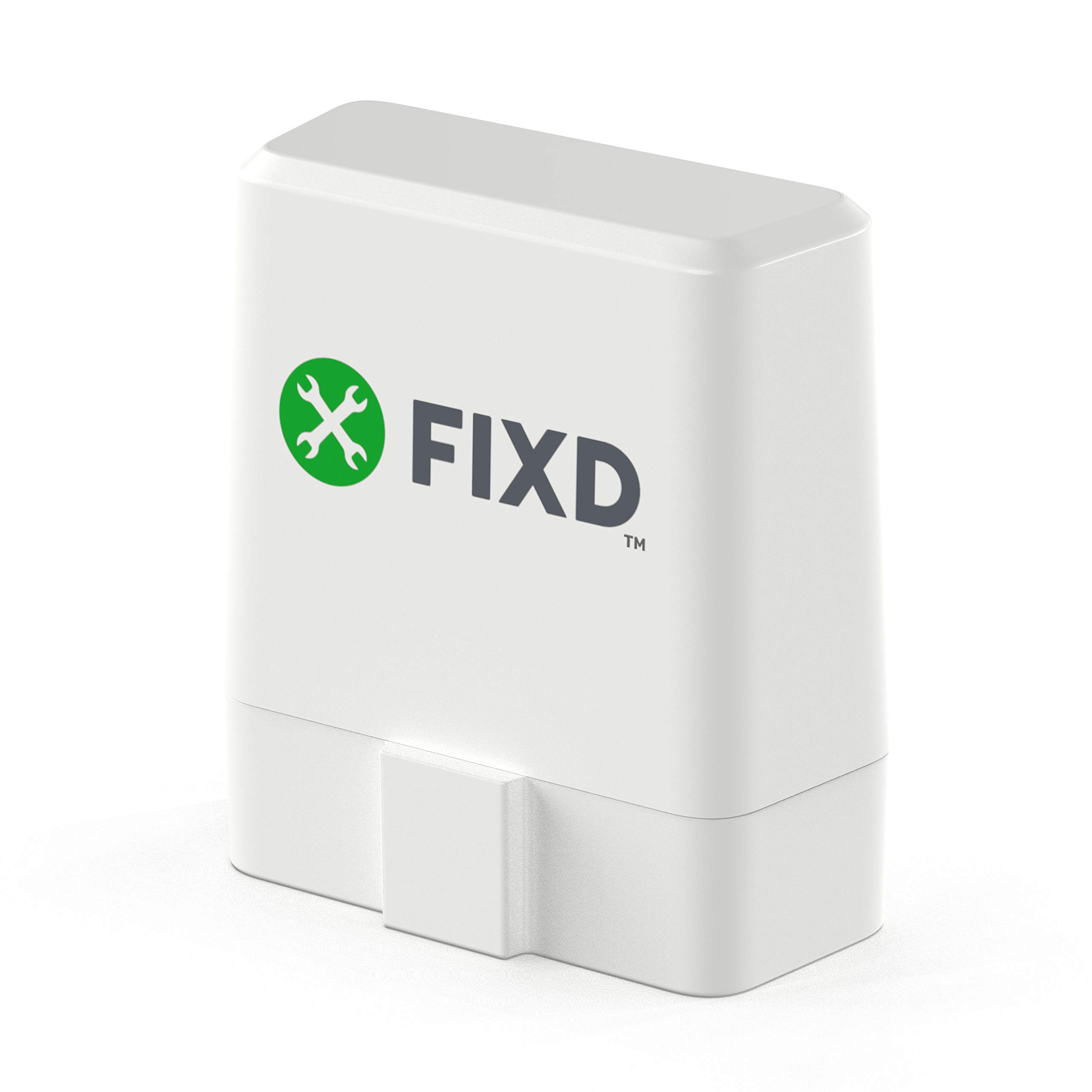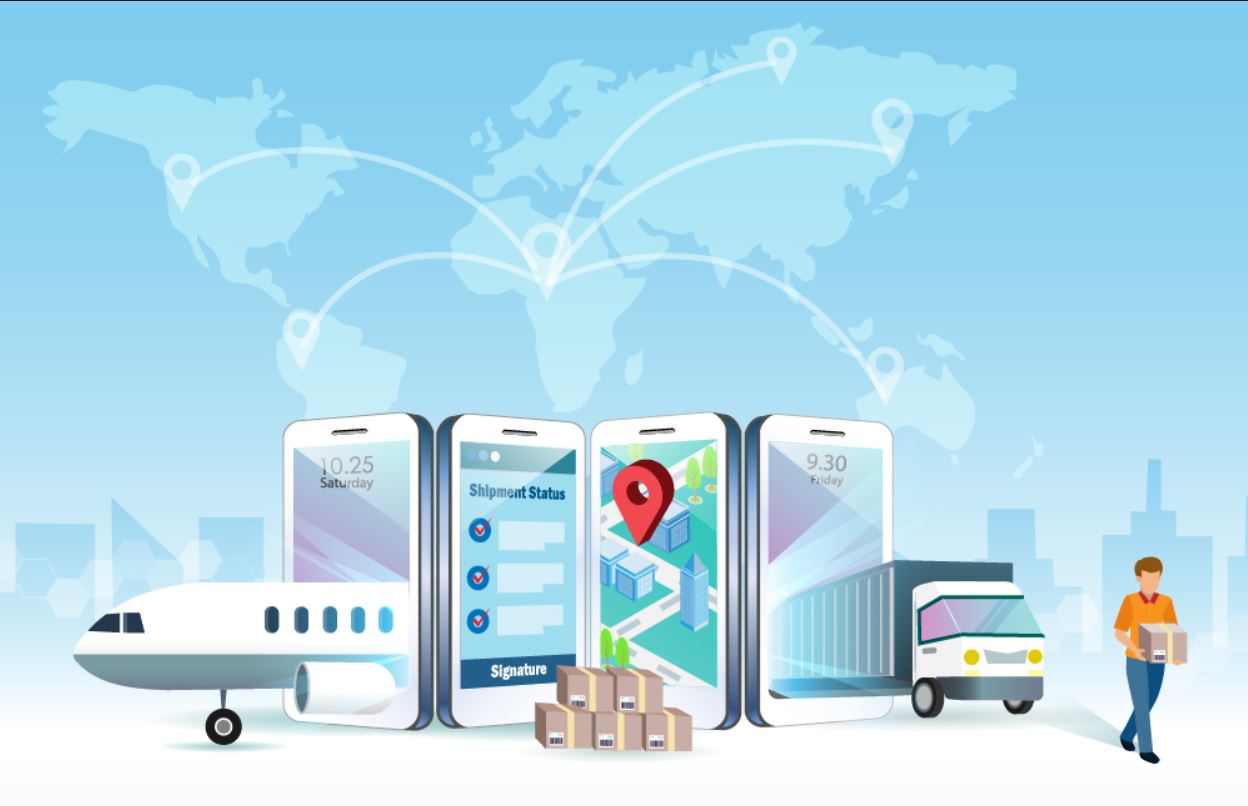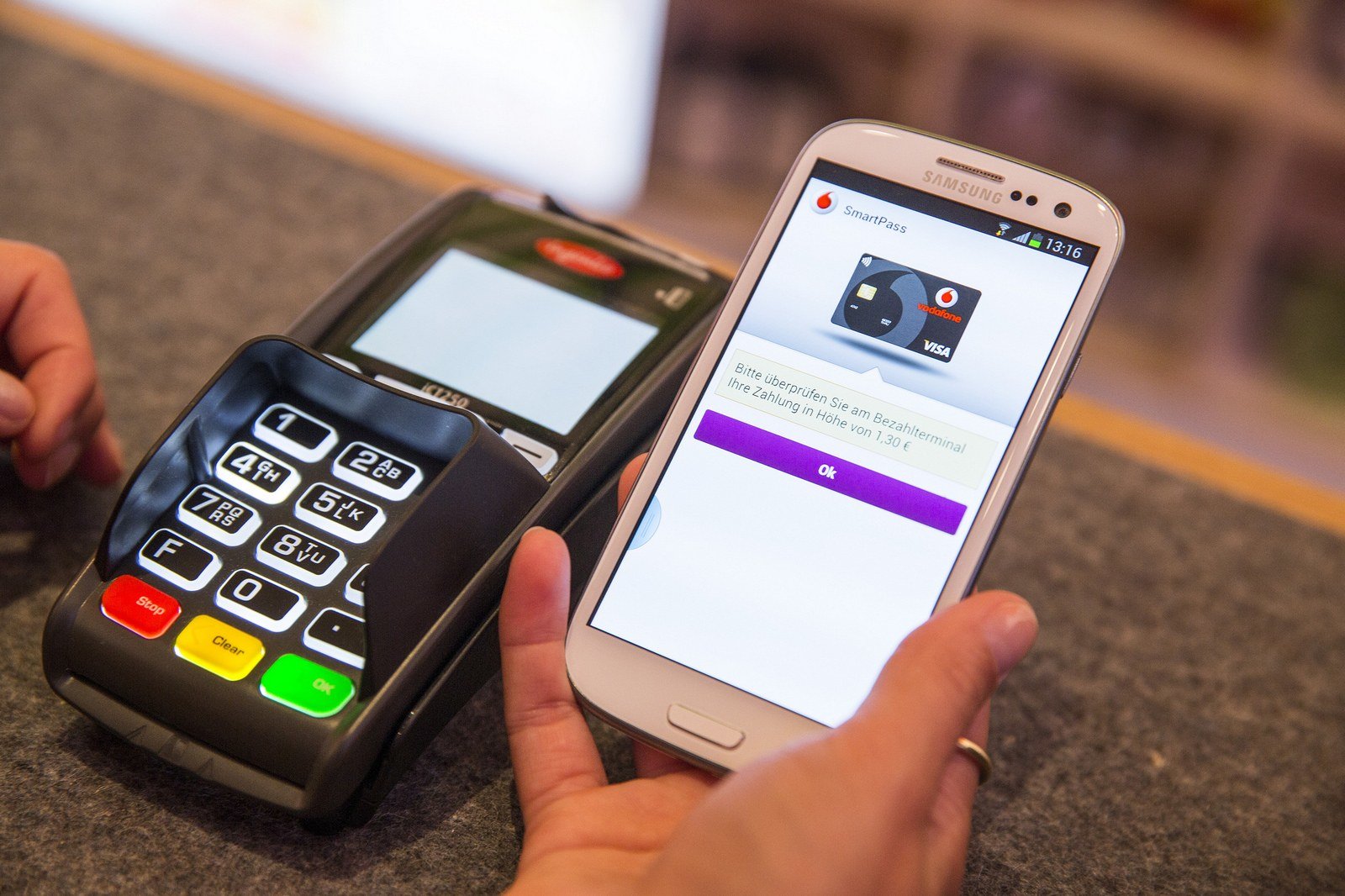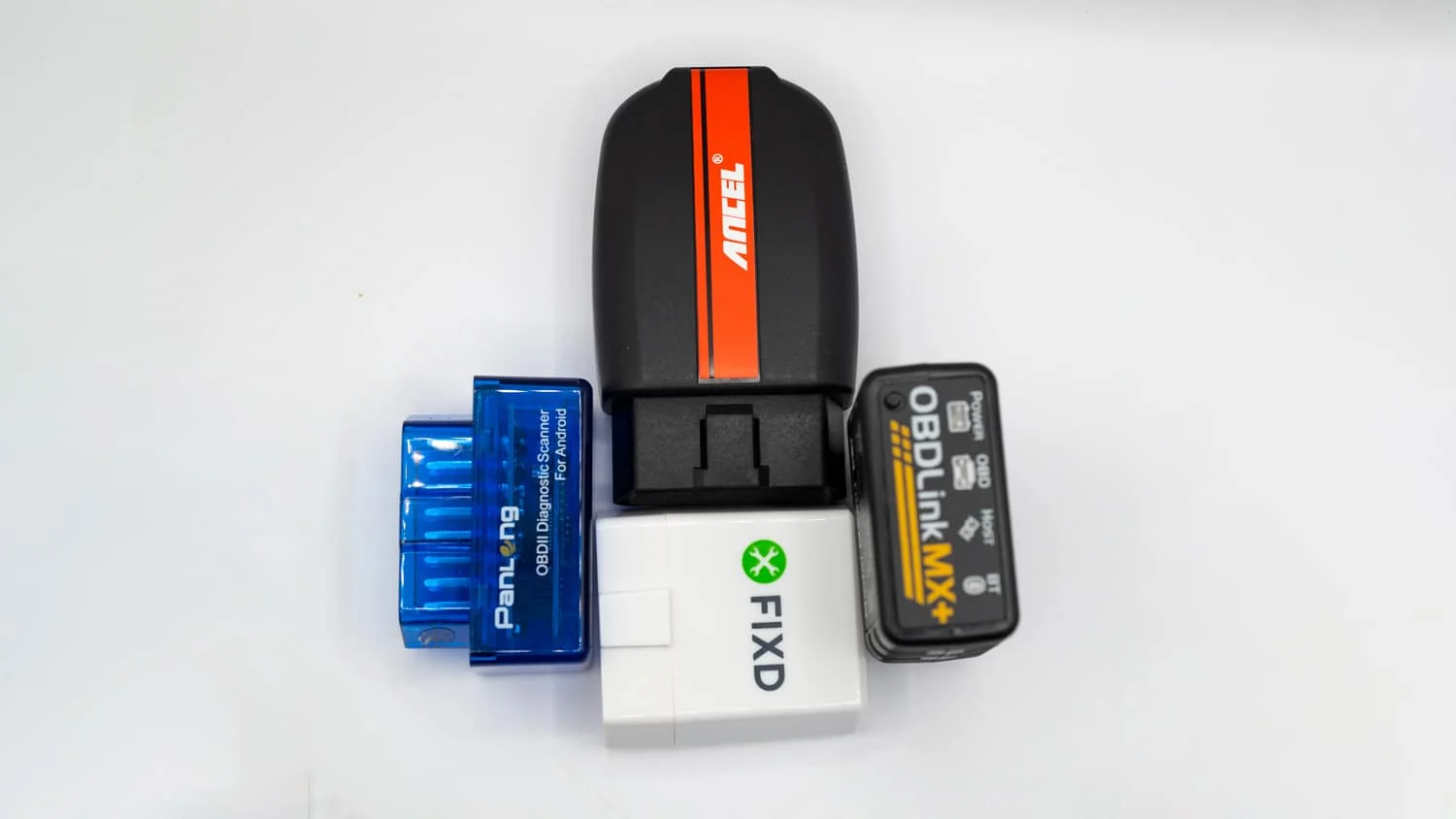Introduction
As technology continues to advance at a rapid pace, the Internet of Things (IoT) has emerged as a transformative force. From smart homes to industrial automation, the IoT has revolutionized the way we live and work. With billions of connected devices and sensors collecting and exchanging data, the demand for skilled professionals in the field of IoT has skyrocketed.
The IoT refers to the network of physical devices, vehicles, appliances, and other objects embedded with sensors, software, and connectivity. These devices collect and exchange data through the internet, enabling them to interact with each other and with humans. This connectivity opens up endless possibilities for innovation and efficiency across various sectors.
In this digital age, becoming an IoT engineer can be a rewarding career choice. Whether you are a recent graduate or a seasoned professional looking for a career change, acquiring the skills and knowledge to become an IoT engineer can pave the way to exciting opportunities in a rapidly growing industry.
So, why should you consider becoming an IoT engineer? The answer lies in the immense potential and impact the IoT has on various sectors, including healthcare, transportation, manufacturing, and smart cities. As an IoT engineer, you will have the chance to contribute to the development of innovative solutions, improve efficiency, and solve complex challenges.
Furthermore, the demand for IoT professionals is on the rise. According to a report by MarketsandMarkets, the global IoT market is projected to reach $561.04 billion by 2022. This surge in demand has created a skills gap, with many companies struggling to find qualified candidates to fill IoT-related roles. By acquiring the necessary skills and knowledge, you can position yourself as a sought-after expert in the field.
In the following sections, we will explore the skills and background required to become an IoT engineer, as well as the steps you can take to embark on this exciting career path. So, let’s dive in and discover how you can become an IoT engineer!
What is IoT?
The Internet of Things (IoT) refers to the interconnected network of devices, vehicles, appliances, and other objects embedded with sensors and software that enable them to collect and exchange data through the internet. These devices, commonly referred to as “smart” devices, are capable of communicating with each other and with humans, creating a web of connectivity and enabling automation and advanced analytics.
At its core, the IoT is about enhancing efficiency, convenience, and productivity through the integration of technology and everyday objects. From smart homes that allow us to control our lights, thermostats, and appliances remotely, to connected cars that provide real-time navigation and performance data, the IoT has transformed our lives in numerous ways.
One of the key features of the IoT is the ability to gather and analyze vast amounts of data. Through the deployment of sensors and actuators in various environments, the IoT ecosystem collects data on everything from temperature and humidity to movement and location. This data can then be leveraged to gain valuable insights, automate processes, and make informed decisions.
The applications of the IoT are diverse and span across different industries. In healthcare, for instance, IoT devices can monitor patients’ vital signs, transmit data to healthcare providers, and enable remote patient monitoring. In manufacturing, the IoT facilitates predictive maintenance, optimizing production processes, and improving overall efficiency. Smart cities leverage the IoT to manage resources, enhance safety and security, and improve the quality of life for residents.
In addition to its impact on various sectors, the IoT has also spurred the development of new business models and opportunities. Companies can offer subscription-based services, create personalized experiences, and gather valuable consumer insights through the data generated by IoT devices. This opens up avenues for innovation and growth for businesses of all sizes.
Overall, the Internet of Things is revolutionizing the way we interact with technology and the world around us. It presents endless possibilities for improving efficiency, enhancing convenience, and creating new experiences. As an IoT engineer, you will be at the forefront of this technological evolution, contributing to the design, implementation, and deployment of innovative solutions that shape the future.
Why Become an IoT Engineer?
Becoming an IoT engineer offers numerous benefits and opportunities in today’s technology-driven world. Here are some compelling reasons to consider a career in this field:
1. Increasing Demand: The demand for skilled IoT engineers is on the rise. As businesses across industries embrace IoT technologies, there is a growing need for professionals who can design, implement, and maintain IoT systems. By becoming an IoT engineer, you position yourself in a field with a high demand for qualified individuals.
2. Exciting and Diverse Projects: The IoT landscape is vast, providing opportunities to work on diverse and exciting projects. From developing smart home systems and wearable devices to creating solutions for smart cities and industrial automation, the range of applications is extensive. As an IoT engineer, you can work on innovative projects that are at the forefront of technology.
3. Contributing to Positive Change: The IoT has the potential to make a significant impact on our daily lives and the world around us. By becoming an IoT engineer, you can contribute to the development of solutions that address real-world challenges. Whether it’s improving healthcare outcomes, optimizing energy consumption, or enhancing transportation systems, your work can help create positive change.
4. Interdisciplinary Nature: IoT engineering involves the convergence of various disciplines, such as computer science, electrical engineering, and data analytics. This cross-disciplinary nature offers the opportunity to work with professionals from different fields, fostering collaboration and broadening your skillset.
5. Continuous Learning and Growth: The field of IoT is constantly evolving, with new technologies, standards, and best practices emerging regularly. As an IoT engineer, you will be immersed in a dynamic and fast-paced environment that promotes lifelong learning. This constant learning and growth ensure that your skills remain relevant and that you stay up-to-date with the latest advancements.
6. Lucrative Salary and Career Advancement: The demand for IoT engineers comes with attractive salary packages and career advancement opportunities. As you gain experience and expertise in the field, you can progress to managerial positions or specialize in specific IoT domains, opening doors to higher salaries and leadership roles.
7. Entrepreneurial Opportunities: The IoT landscape provides fertile ground for entrepreneurial ventures. With your knowledge and skills as an IoT engineer, you can identify market gaps or innovative ideas and develop your IoT-based products or services. This opens up possibilities for starting your own business or working in startups that leverage IoT technologies.
Becoming an IoT engineer offers a rewarding and promising career path. It allows you to work on cutting-edge projects, contribute to positive change, and be part of a rapidly growing industry. So, if you have a passion for technology and a desire to make a difference, pursuing a career as an IoT engineer might be the perfect choice for you.
Required Skills and Background
To become a successful IoT engineer, there are certain skills and background knowledge that you should possess. While specific requirements may vary depending on the job role and industry, here are some essential skills and qualifications for aspiring IoT engineers:
1. Strong Foundation in Computer Science: A solid understanding of computer science principles is crucial. This includes knowledge of programming languages, algorithms, data structures, and software development methodologies. Familiarity with languages such as C++, Java, Python, and JavaScript is highly beneficial for IoT development.
2. Background in Electronics and Electrical Engineering: Proficiency in electronics and electrical engineering concepts is essential for working with IoT devices and hardware components. Understanding electronic circuits, sensors, actuators, and microcontrollers is vital to design, connect, and troubleshoot IoT systems.
3. Networking and Protocols: IoT devices communicate with each other and exchange data through networks. Therefore, having a good understanding of networking fundamentals and protocols, such as TCP/IP, MQTT, and HTTP, is necessary for IoT engineers. Knowledge of network security and data encryption is also important for ensuring the confidentiality and integrity of IoT data.
4. Programming and Scripting: IoT engineers should have proficiency in programming and scripting languages to develop, modify, and maintain software applications that interact with IoT devices. Knowledge of languages such as Python, JavaScript, and SQL is highly valuable for working with IoT platforms and databases.
5. Data Analytics and Visualization: IoT generates vast amounts of data. As an IoT engineer, you should have a basic understanding of data analytics concepts and tools to derive insights from the collected data. Knowledge of data visualization techniques can help you present information in a meaningful and understandable way.
6. Problem-Solving and Critical Thinking: IoT engineering often involves addressing complex and multifaceted challenges. Strong problem-solving and critical thinking skills are crucial for analyzing issues, developing creative solutions, and troubleshooting IoT systems.
7. Adaptability and Continuous Learning: The field of IoT is rapidly evolving, with new technologies and trends emerging regularly. Being adaptable and having a thirst for learning are necessary qualities for an IoT engineer. Keeping up with industry developments, attending conferences, and engaging in continuous professional development will help you stay at the forefront of IoT advancements.
8. Collaboration and Communication: IoT projects typically involve cross-functional teams and require effective collaboration and communication skills. Being able to communicate technical concepts clearly to both technical and non-technical stakeholders is essential for successful project implementation.
While a degree in computer science, electrical engineering, or a related field is advantageous, it is not always a strict requirement. Many successful IoT engineers come from diverse educational backgrounds and have gained relevant skills through certifications, online courses, and practical hands-on experience.
By acquiring these essential skills and continuously expanding your knowledge, you can position yourself as a competent and sought-after IoT engineer.
Steps to Become an IoT Engineer
If you’re interested in becoming an IoT engineer, here are the key steps you can take to embark on this exciting career path:
1. Gain a Solid Understanding of Computer Science:
- Take courses or self-study to develop a strong foundation in computer science concepts, programming languages, and software development.
- Familiarize yourself with algorithms, data structures, and object-oriented programming.
2. Focus on Electronics and Electrical Engineering:
- Acquire knowledge of electronics and electrical engineering principles through formal education or online resources.
- Learn about circuits, sensors, actuators, and microcontrollers.
- Gain hands-on experience by working on electronics and electrical projects.
3. Learn about Networking and Protocols:
- Study networking fundamentals, including TCP/IP, Wi-Fi, and cellular networks.
- Understand IoT protocols such as MQTT, CoAP, and HTTP.
- Explore network security concepts and encryption techniques.
4. Develop Programming Skills:
- Master programming languages used in IoT development, such as Python, JavaScript, and C++.
- Learn how to write code for IoT devices, connect them to networks, and handle data exchange.
- Practice implementing algorithms and data structures in IoT applications.
5. Explore IoT Development Platforms and Tools:
- Gain hands-on experience with popular IoT development platforms like Arduino, Raspberry Pi, or NodeMCU.
- Utilize IoT development tools and frameworks such as AWS IoT, Google Cloud IoT, or Microsoft Azure IoT Suite.
- Learn how to leverage APIs and cloud services for IoT application development.
6. Get Hands-On Experience with IoT Projects:
- Work on personal IoT projects to apply your knowledge and gain practical experience.
- Engage in real-world IoT projects through internships, collaborations, or freelance work.
- Build IoT devices or systems that solve practical problems or address specific industry challenges.
7. Stay Updated with the Latest IoT Trends and Technologies:
- Follow industry blogs, online forums, and social media platforms to stay informed about new IoT technologies, trends, and best practices.
- Join professional IoT organizations or communities to network with experts in the field.
- Participate in webinars, workshops, and conferences related to IoT engineering.
By following these steps and continuously expanding your knowledge and skills, you can position yourself for a successful career as an IoT engineer. Remember to embrace a lifelong learning mindset and seek opportunities to apply your skills in practical projects.
Step 1: Gain a Solid Understanding of Computer Science
One of the crucial steps to becoming an IoT engineer is to develop a strong foundation in computer science. This step forms the basis for understanding the core principles and concepts underlying IoT technologies. Here are some key aspects to focus on:
1. Learn Programming Languages: Start by learning programming languages such as Python, JavaScript, C++, or Java. These languages are widely used in IoT development and will be essential for writing code that interacts with devices and collects data. Mastering these languages will enable you to create efficient and robust IoT applications.
2. Understand Data Structures and Algorithms: Study data structures and algorithms, as they are fundamental building blocks in computer science. Having a solid understanding of these concepts will facilitate the optimization of data storage and retrieval in IoT systems. It will also enable you to implement efficient algorithms for data analysis and processing.
3. Get Familiar with Object-Oriented Programming (OOP): Object-oriented programming is a software development paradigm widely used in IoT applications. Understand the principles of encapsulation, inheritance, and polymorphism, as they allow you to build modular and scalable IoT systems. Practice developing object-oriented programs to enhance your proficiency in this programming paradigm.
4. Study Operating Systems and Networking: Gain knowledge of operating system concepts, as IoT devices often operate on embedded systems with limited resources. Understand how operating systems manage memory, process scheduling, and file systems. Additionally, learn about networking principles, including TCP/IP, Wi-Fi, and cellular networks. This knowledge will enable you to connect IoT devices to networks and facilitate communication.
5. Explore Database Management Systems: IoT generates massive amounts of data that require efficient storage and retrieval. Learn about database management systems (DBMS), including relational databases and NoSQL databases. Understand concepts such as data modeling, querying, and indexing to effectively manage IoT data.
6. Stay Up-to-Date with Emerging Technologies: The field of computer science is ever-evolving. Stay updated with emerging technologies and frameworks that are relevant to IoT, such as edge computing, cloud computing, and machine learning. By embracing these advancements, you can leverage new tools and techniques in your IoT projects.
7. Practice Problem-Solving: Computer science is all about problem-solving. Engage in coding challenges, algorithmic problem-solving exercises, and participate in coding competitions. Practice breaking down complex problems into smaller, manageable tasks and develop efficient solutions. This will enhance your problem-solving skills, which are crucial for tackling challenges in IoT engineering.
By gaining a solid understanding of computer science concepts, languages, and algorithms, you will establish a strong foundation for your IoT engineering journey. This step will equip you with the necessary skills to develop robust IoT applications, analyze data, and design scalable systems. Remember to continuously practice coding, explore new technologies, and seek opportunities to apply your computer science knowledge in real-world IoT projects.
Step 2: Focus on Electronics and Electrical Engineering
Building a strong foundation in electronics and electrical engineering is an essential step towards becoming an IoT engineer. This step will equip you with the necessary knowledge and skills to work with IoT devices and understand the hardware components. Here are some key aspects to focus on:
1. Learn Basic Electronics Principles: Familiarize yourself with fundamental electronics concepts such as Ohm’s law, circuit analysis, and digital logic. Understand how electronic components such as resistors, capacitors, diodes, and transistors function and their applications in building circuits.
2. Study Sensors and Actuators: Sensors play a vital role in IoT systems by collecting data from the environment, while actuators enable devices to perform actions. Learn about different types of sensors such as temperature sensors, motion sensors, and humidity sensors, as well as actuators like motors and solenoids. Understand how these components interact with microcontrollers and IoT platforms.
3. Gain Knowledge of Microcontrollers: Microcontrollers are the heart of many IoT devices as they receive input from sensors and control the actions of actuators. Learn about popular microcontrollers such as Arduino and Raspberry Pi. Understand how to program microcontrollers, interface them with various components, and develop firmware for IoT applications.
4. Explore Circuit Design and PCB Layout: Circuit design and printed circuit board (PCB) layout skills are essential for IoT engineers. Learn about designing circuits using software tools like Eagle or KiCad. Gain knowledge of PCB design principles and understand how to create efficient and compact layouts that integrate all the necessary components.
5. Understand Power Management: IoT devices often operate on limited power sources, such as batteries or solar cells. Learn about power management techniques to optimize energy usage and extend the battery life of IoT devices. This includes concepts like power supply design, voltage regulation, and low-power modes for microcontrollers.
6. Practice Troubleshooting and Debugging: Electronics and electrical systems may encounter issues that require troubleshooting and debugging skills. Develop hands-on experience by building and troubleshooting small projects. Learn how to use multimeters, oscilloscopes, and logic analyzers to diagnose and resolve electrical problems.
7. Keep Up with Emerging Technologies: Stay updated with the latest advancements in electronics and electrical engineering related to IoT. Follow industry trends and explore new technologies such as wireless communication protocols, IoT security mechanisms, and power-efficient components. This will ensure that your knowledge remains current in this rapidly changing field.
By focusing on electronics and electrical engineering, you will gain the necessary expertise to work with IoT hardware components, design circuits, and troubleshoot electrical issues. This step will enable you to effectively implement IoT solutions, integrate sensors and actuators, and build robust IoT devices. Remember to practice hands-on projects and continuously engage in learning opportunities to deepen your understanding in this area.
Step 3: Learn about Networking and Protocols
Networking and protocols are fundamental aspects of IoT engineering as they facilitate communication between devices and enable seamless data exchange. Understanding networking principles and protocols is crucial for building interconnected IoT systems. Here are the key areas to focus on:
1. Understand Networking Basics: Familiarize yourself with the fundamentals of networking, including concepts such as IP addressing, subnetting, routing, and DNS. Learn about the OSI model and how different layers (e.g., physical, data-link, network, transport, and application) play a role in data transmission.
2. Explore IoT Networking Protocols: Study IoT-specific networking protocols such as MQTT (Message Queuing Telemetry Transport), CoAP (Constrained Application Protocol), and HTTP (Hypertext Transfer Protocol). Understand the characteristics, advantages, and use cases of each protocol to determine the most suitable one for your IoT applications.
3. Learn Wireless Communication Technologies: Wireless communication is a crucial aspect of IoT. Gain knowledge of wireless technologies such as Wi-Fi, Bluetooth, Zigbee, LoRaWAN, and cellular networks (2G, 3G, 4G, and 5G). Understand the strengths, limitations, and considerations for deploying wireless connectivity in IoT systems.
4. Study Network Security: IoT devices are often vulnerable to security threats. Learn about network security principles and practices to protect IoT systems from unauthorized access, data breaches, and other cyber threats. Familiarize yourself with encryption techniques, authentication protocols, and secure communication mechanisms.
5. Explore Cloud Computing: Cloud computing plays a significant role in IoT deployments, offering scalable storage, processing power, and data analytics capabilities. Study cloud computing concepts and understand how to integrate IoT devices with cloud platforms such as AWS IoT, Google Cloud IoT, or Microsoft Azure IoT Suite.
6. Become Familiar with Edge Computing: Edge computing is gaining prominence in IoT applications, as it allows data processing and analytics to be performed at the edge of the network, closer to the devices. Learn about edge computing principles, edge devices, and frameworks such as TensorFlow Lite and Azure IoT Edge.
7. Practice Networking Implementation: Apply your knowledge by implementing networking concepts in practical projects. Build small-scale IoT systems that involve communication between devices, data transmission over networks, and interactions with cloud or edge platforms. This hands-on experience will reinforce your understanding of networking and protocols in an IoT context.
By learning about networking principles and protocols, you will acquire the skills needed to design, implement, and secure communication between IoT devices. This step will enable you to establish reliable and efficient connections, ensuring smooth data exchange and interconnectivity within IoT systems. Remember to stay updated with emerging networking technologies and industry standards to adapt to the ever-evolving landscape of IoT networking.
Step 4: Develop Programming Skills
Developing strong programming skills is crucial for becoming a successful IoT engineer. As an IoT engineer, you will be responsible for designing and developing software applications that interact with IoT devices and process the data they generate. Here are the key areas to focus on when developing your programming skills:
1. Learn Programming Languages: Master programming languages commonly used in IoT development, such as Python, JavaScript, C++, or Java. These languages offer a wide range of libraries, frameworks, and tools that support IoT application development.
2. Understand Object-Oriented Programming (OOP): Gain a deep understanding of object-oriented programming (OOP) concepts, such as classes, objects, inheritance, and polymorphism. OOP allows for modular and scalable code, making it easier to build and maintain complex IoT applications.
3. Practice Embedded Programming: Embedded programming skills are crucial for working with microcontrollers and IoT devices. Learn how to code firmware for microcontrollers using languages such as C or C++. Understand how to interact with sensors, actuators, and other peripherals through GPIO pins or communication protocols like I2C or SPI.
4. Explore IoT Platforms and Frameworks: Familiarize yourself with IoT development platforms and frameworks like Arduino, Raspberry Pi, or NodeMCU. These platforms provide prebuilt libraries, hardware compatibility, and a supportive community that can expedite your IoT development process.
5. Acquire Web Development Skills: Many IoT applications involve developing web-based interfaces or integrating IoT systems with web technologies. Learn web development skills such as HTML, CSS, and JavaScript to create user-friendly dashboards and enable remote control of IoT devices through web browsers.
6. Implement Data Processing and Analytics: IoT generates a massive amount of data that requires processing and analysis. Gain skills in data processing and analytics technologies such as SQL, NoSQL, Apache Kafka, Apache Spark, or machine learning frameworks like TensorFlow or PyTorch. This will enable you to extract valuable insights from IoT data.
7. Collaborate with APIs and Cloud Services: IoT often involves integrating various APIs and utilizing cloud services to enhance the functionality and scalability of IoT applications. Learn how to interact with APIs and utilize cloud platforms like AWS IoT, Google Cloud IoT, or Microsoft Azure IoT Suite to store, analyze, and manage IoT data.
Remember to continuously practice your programming skills through personal projects, hackathons, or open-source contributions. By developing strong programming skills, you will enhance your ability to create robust, efficient, and scalable software applications for IoT systems.
Step 5: Explore IoT Development Platforms and Tools
Exploring IoT development platforms and tools is an important step towards becoming an accomplished IoT engineer. These platforms and tools provide a foundation for developing and deploying IoT applications efficiently. Here are the key areas to focus on:
1. Arduino: Arduino is a popular open-source hardware and software platform that is widely used in IoT projects. It offers a wide range of microcontroller boards, libraries, and a user-friendly integrated development environment (IDE). Familiarize yourself with Arduino’s ecosystem to rapidly prototype and build IoT applications.
2. Raspberry Pi: Raspberry Pi is a credit card-sized single-board computer that serves as an excellent platform for IoT projects. It provides a more versatile and robust computing environment compared to microcontrollers. Learn how to use Raspberry Pi’s GPIO pins, explore its operating system (Raspbian), and utilize its features for IoT development.
3. NodeMCU: NodeMCU is an open-source firmware and development board based on the ESP8266 Wi-Fi module. It allows for rapid prototyping of IoT applications, especially those that require wireless connectivity. Get hands-on experience with NodeMCU and its programming environment to create Wi-Fi enabled IoT projects.
4. AWS IoT: Amazon Web Services (AWS) provides an IoT-specific platform called AWS IoT. It offers a suite of services, including device management, secure communication, data storage, and analytics. Familiarize yourself with AWS IoT to leverage its features for scalable and secure IoT applications in the cloud.
5. Google Cloud IoT: Google Cloud IoT is another cloud-based platform that enables the development of IoT solutions. It provides features such as device registry, cloud messaging, and cloud storage, along with machine learning capabilities. Explore Google Cloud IoT and learn how to integrate IoT devices with Google Cloud Platform services.
6. Microsoft Azure IoT Suite: Microsoft Azure IoT Suite is a comprehensive platform for building end-to-end IoT solutions. It offers device management, data ingestion, analytics, and machine learning capabilities. Gain familiarity with Azure IoT Suite to design and deploy IoT applications on Microsoft Azure’s cloud infrastructure.
7. MQTT and CoAP: MQTT (Message Queuing Telemetry Transport) and CoAP (Constrained Application Protocol) are lightweight messaging protocols commonly used in IoT applications. Learn how to utilize these protocols for efficient communication between IoT devices and applications.
Explore these platforms and tools based on your specific project requirements and preferences. It is important to gain hands-on experience and familiarity with various IoT development platforms and tools. This knowledge will enable you to select the most suitable platform for your IoT projects and simplify the development process.
Step 6: Get Hands-On Experience with IoT Projects
Gaining practical hands-on experience is an essential step towards becoming a proficient IoT engineer. Working on real-world IoT projects allows you to apply your knowledge, learn from challenges, and deepen your understanding of IoT technologies. Here are the key areas to focus on when seeking hands-on experience with IoT projects:
1. Personal Projects: Start by working on personal IoT projects that align with your interests and goals. Identify a problem or challenge you want to solve using IoT technology, and design and implement a solution. This hands-on experience will help you gain a comprehensive understanding of the entire IoT development lifecycle.
2. Collaborative Projects: Seek opportunities to collaborate with other IoT enthusiasts or professionals. Join online communities, meetups, or forums where you can connect with like-minded individuals and collaborate on IoT projects. Collaborative projects will expose you to different perspectives, enhance your teamwork skills, and help you learn from others’ experiences.
3. Internships or Work Opportunities: Look for internships or work opportunities with companies or organizations that specialize in IoT. These experiences will provide valuable exposure to real-world IoT projects, industry best practices, and working with professional teams. Internships can serve as a stepping stone to a successful career in IoT engineering.
4. Freelancing: Consider freelancing opportunities in the IoT space. Many businesses and startups require IoT expertise but may not have dedicated resources. Freelancing allows you to work on diverse projects, build a portfolio, and gain practical experience across different industries and applications.
5. Hackathons and Competitions: Participate in hackathons or competitions focused on IoT. These events challenge you to solve problems within a limited time frame, fostering creativity, teamwork, and rapid prototyping skills. Additionally, competing with other participants will expose you to different approaches and inspire new ideas.
6. Open-Source Contribution: Contribute to open-source IoT projects. Open-source communities provide opportunities to collaborate with experienced developers, showcase your skills, and make a positive impact on the IoT engineering community. Contributing to open-source projects will enhance your coding skills and help you learn from industry experts.
7. Continuous Learning and Improvement: Throughout your hands-on experiences, continuous learning and improvement are imperative. Embrace a growth mindset and seek feedback from mentors, peers, and industry professionals. Reflect on your projects, identify areas for improvement, and actively seek opportunities to enhance your skills.
By actively engaging in hands-on IoT projects, you will gain practical experience, develop problem-solving abilities, and familiarize yourself with the challenges of working in the field. This practical knowledge, combined with your technical understanding, will set you apart as a competent IoT engineer.
Step 7: Stay Updated with the Latest IoT Trends and Technologies
Staying updated with the latest IoT trends and technologies is crucial for aspiring and seasoned IoT engineers alike. The field of IoT is constantly evolving, with new advancements and innovations emerging regularly. Here are the key areas to focus on to stay current in the dynamic world of IoT:
1. Industry Blogs and Publications: Follow reputable IoT-focused blogs, news websites, and industry publications. These platforms provide insights into the latest trends, case studies, and technological advancements in the IoT space. Stay informed about new products, frameworks, and best practices by regularly reading relevant content.
2. Social Media and Online Communities: Join IoT-focused social media groups, online forums, and communities. Engage in discussions, ask questions, share your knowledge, and learn from peers and professionals. Platforms like LinkedIn, Twitter, and IoT-specific forums can connect you with experts, provide valuable resources, and keep you updated with the latest insights.
3. Webinars and Online Courses: Attend webinars, virtual conferences, and online courses on IoT-related topics. These platforms offer opportunities to learn from industry experts, gain insights into emerging technologies, and enhance your skill set. Seek out courses on topics such as IoT security, edge computing, or data analytics to stay abreast of the latest developments.
4. Professional IoT Organizations: Join professional IoT organizations and associations. These organizations often hold conferences, events, and workshops where you can network with industry experts and gain exposure to cutting-edge technologies. Active participation in such organizations allows you to access valuable resources, stay updated, and build connections within the IoT community.
5. Industry Research and Reports: Stay informed about market trends, forecasts, and research reports related to IoT. Market research firms and industry analysts regularly publish reports that provide insights into IoT adoption trends, emerging markets, and potential opportunities. Understanding the market landscape will help you align your skills and expertise accordingly.
6. Experiment with Emerging Technologies: Embrace experimentation and exploration of emerging IoT technologies. Set aside time to explore new platforms, frameworks, and hardware devices. Experimenting with emerging technologies will expand your knowledge and prepare you for the adoption and implementation of these technologies in real-world projects.
7. Continuous Professional Development: Adopt a mindset of continuous learning and development. Stay curious, seek out new challenges, and be open to learning new skills. Regularly assess your knowledge gaps and identify areas for improvement. Engage in self-study, online courses, certifications, or higher education programs to broaden your understanding of IoT technologies and their applications.
By staying updated with the latest IoT trends and technologies, you remain at the forefront of the field. Your knowledge will enable you to adopt innovative approaches, leverage new tools and frameworks, and create cutting-edge IoT solutions. Stay curious, embrace lifelong learning, and proactively seek opportunities to engage with the evolving IoT landscape.
Conclusion
Becoming an IoT engineer offers an exciting and rewarding career path in today’s technology-driven world. By following the steps outlined in this guide, you can embark on your journey to becoming a proficient IoT engineer.
Start by gaining a solid understanding of computer science, including programming languages, algorithms, and data structures. Then, focus on electronics and electrical engineering to learn about sensors, actuators, microcontrollers, and circuit design. Expand your knowledge by learning about networking and protocols, which form the backbone of IoT communication.
Develop strong programming skills, including languages commonly used in IoT development, and explore IoT development platforms and tools to accelerate your development process. Gain hands-on experience through personal projects, collaborations, internships, or freelancing opportunities. Continuously update your knowledge and skills by staying informed about the latest IoT trends and technologies.
Remember that becoming an IoT engineer is a journey of continuous learning and growth. Embrace new challenges, practice problem-solving, and stay curious about emerging technologies. By combining your technical expertise with practical experience and a passion for IoT, you can create innovative solutions, contribute to positive change, and make a meaningful impact in the world of IoT.
So, take the first step today and embark on your journey to becoming an IoT engineer. Embrace the opportunities that this rapidly evolving field presents, and prepare yourself for an exciting and fulfilling career in IoT engineering.











